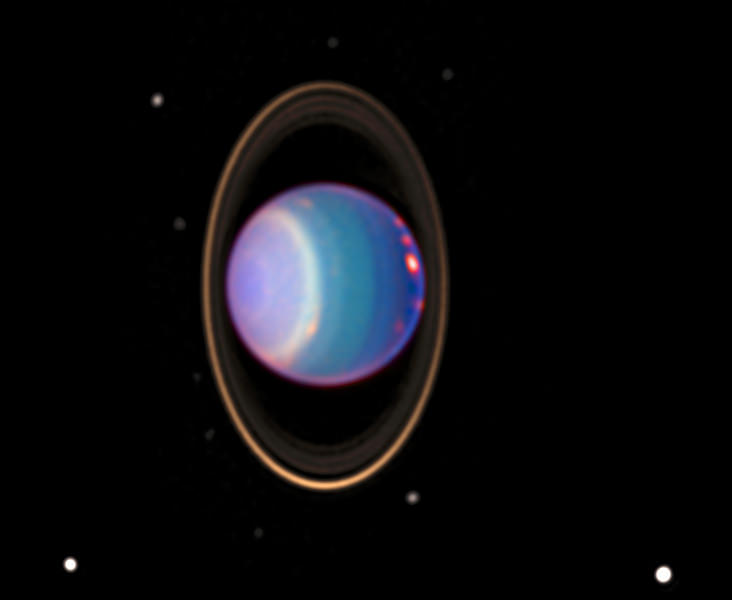We’re all familiar with the beautiful rings around Saturn. In fact, you can see them with any backyard telescope. But did you know that Uranus has rings too?
The rings of Uranus were first discovered in 1977 by the astronomical team of James L. Elliot, Edward W. Dunham, and Douglas J. Mink. When he first discovered Uranus more than 200 years ago, William Herschel also reported seeing rings, but that’s probably impossible, because the rings of Uranus are very dark and thin.
Astronomers now know that Uranus has 13 distinct rings. They start at about a distance of 38,000 km from the center of Uranus, and then extend out to about 98,000 km.
Unlike the rings of Saturn, which are very bright and composed of water ice, the rings of Uranus are relatively dark. Instead of containing dust, the rings seem to be made up of larger chunks, measuring 0.2 to 20 m across. These would really qualify as boulders, not dust. They’re also very thin. Each ring is only a few km thick.
Uranus now has a total of 10 known rings.
The rings of Uranus are thought to be very young, not more than 600 million years old. They probably came from a few shepherd moons that were shattered by Uranus’ gravity and turned into rings around the planet. The chunks collided with each other and turned into smaller and smaller particles.
We have written many stories about the rings of Uranus. Here’s one about the rings seen edge on. And here’s another about the discovery of a blue ring around Uranus.
Here’s an article that discusses the discovery of the Rings of Uranus. And here’s a fact sheet from NASA about Uranus’ rings.
We have recorded an episode of Astronomy Cast just about Uranus. You can access it here: Episode 62: Uranus.

